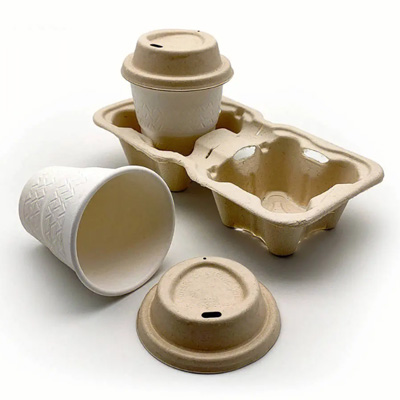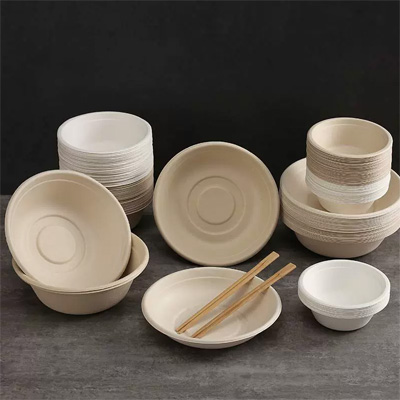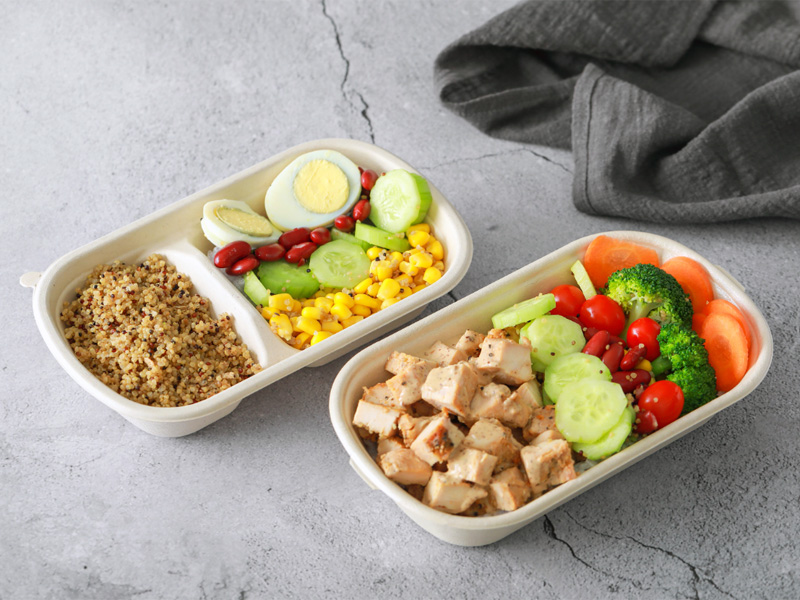With the increasing awareness of environmental protection among people, paper packaging has become a choice to replace plastic with many advantages, and the pulp molding industry will become an important participant in reducing and replacing plastic. As a professional pulp molding machinery manufacturer, AGICO will share the environmental characteristics and innovation possibilities of pulp molding in this post.
The large-scale production of pulp molding products has a history of several decades and continues to rapidly develop. The pulp molding industry has evolved from the early dominance of dry-pressing production processes to the development of both dry-pressing and wet-pressing processes. The more environmentally friendly and energy-efficient direct pressing process has become a new direction in the research and development of pulp molding technology.
The production equipment has progressed from simple single-machine single-workstation and double-workstation production to continuous and automated wet pressing processes, with the development of unmanned and intelligent production equipment. The application scope of pulp molding products has also expanded from low-demand agricultural and sideline product trays, food and pharmaceutical packaging, and industrial product internal packaging to high-precision instrument panels, protective packaging for electronic products, and high-precision disposable tableware. The focus of research in the field of pulp molding has shifted from reducing production costs and expanding the application range of products to deeper levels of structural innovation, development of additives, measurement of the physical and chemical properties of pulp molding products, and the design of processing techniques for high-precision pulp molds.


Characteristics of Pulp Molding in Environmental Protection
(1) Pulp molding products have a wide range of raw material sources, with most of the main materials being derived from herbaceous plant fibers such as reeds, straw, rice straw, bagasse, and bamboo. Currently, pulp mills in China that primarily use grass fibers such as reeds, bagasse, bamboo, and straw as their main raw materials have their own pollution control systems. Pulp molded products not only have no environmental pollution issues themselves but also have reliable raw material sources. Pulp molding enterprises that use waste paper as raw materials generally do not have environmental pollution issues associated with pulp production.
(2) The production process of pulp molding products is concise, and there are basically no sources of pollution during the production process, meeting the requirements of environmental protection production. In addition, apart from the high-quality requirements for operators in the self-control system management, other positions in the pulp molding production process are low-skill positions. After a short period of training, operators can quickly acquire the necessary operational skills, which is highly conducive to project promotion and application.
(3) Pulp molding products have a wide range of applications and a large market capacity, with abundant potential for exploration. These products can be widely used in the fields of electrical appliance packaging, seedling cultivation, medical utensils, food service utensils, and fragile item padding, among others. With improvements and replacements made to molds, a versatile pulp molding production line can produce products for various purposes. The diverse functionality and recyclability of these products make them unparalleled by other similar products.
(4) Currently, countries around the world are facing numerous problems caused by environmental pollution, with the proper handling of various plastic waste products being a prominent issue. The recyclability of pulp molding products can greatly alleviate the pressure on environmental protection, and their economic benefits will undoubtedly play a positive role. Once pulp molding products are widely incorporated into people’s daily lives, they are bound to be widely accepted by society and welcomed by the public.
(5) Pulp molding tableware is an important branch of pulp molding products. It is easy to recycle, can be regenerated, and is biodegradable. It originates from nature and returns to nature, making it a typical pollution-free, degradable, and environmentally friendly product that meets the requirements of today’s era and market demands.
Innovation Possibilities of Pulp Molding
Pulp molding offers immense innovation and development opportunities across various industries and sectors. It involves machinery and equipment, mold design and manufacturing, product design and manufacturing, selection and processing of pulp materials, the use of functional additives, printing inks and methods, pulp molding cushioning packaging products, pulp molding tableware and food and pharmaceutical packaging products, as well as high-quality industrial packaging products. Its application scope also extends to utensils, egg and fruit trays, food and pharmaceutical packaging, appliance padding, agricultural implements, medical instruments, military packaging, children’s toys, appliances and props, handicrafts, and more. Therefore, pulp molding presents limitless possibilities for innovation and growth in every industry field.
The pulp molding industry needs to continuously strengthen research and development capabilities, improve product quality and performance, and further reduce production costs to meet the diversified market demands. At the same time, enhancing collaboration and synergistic innovation in the industry chain is crucial to promote the integration of pulp molding technology with other fields, fostering the sustainable development of the industry.
